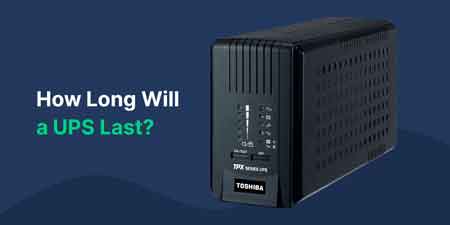Which Factor Determines the Outcome of an Electrical Shock Explained
By R.W. Hurst, Editor

NFPA 70e Training
Our customized live online or in‑person group training can be delivered to your staff at your location.

- Live Online
- 6 hours Instructor-led
- Group Training Available
Download Our OSHA 3075 Fact Sheet – Understanding Electrical Hazards in the Workplace

- Learn the effects of electric current on the human body
- Understand OSHA safety standards and protective devices
- Discover essential lockout/tagout and grounding practices
Which factor determines the outcome of an electrical shock? Primarily current magnitude, body resistance, voltage, exposure duration, path through tissue, and AC/DC frequency; these govern energy transfer, tissue damage risk, fibrillation likelihood, and safety thresholds.
Which Factor Determines the Outcome of an Electrical Shock?
Current magnitude is primary; path, resistance, and duration also shape injury outcome.
✅ Current magnitude (mA) per Ohm's law drives physiological effects
✅ Path through body and contact points set organ exposure
✅ Exposure duration and AC frequency influence fibrillation risk
Which factor determines the outcome of an electrical shock—and why is this knowledge crucial for workplace safety? While voltage often gets the most attention, it's actually the current (amperage), duration of exposure, and the pathway the electricity takes through the body that most significantly influence injury severity or fatality. In industrial and commercial settings, understanding these critical factors can mean the difference between a near miss and a life-threatening incident. This article explores the science behind electrical shock outcomes and how employers and electrical workers can use this knowledge to implement more effective safety protocols. For a practical comparison, see how arc incident energy and PPE selection shape outcomes in cases where the severity of injury in arc flash is analyzed across tasks.
Request a Free Training Quotation
What Role Does the Current Level (Amperage) Play in Determining the Severity of an Electrical Shock?
The level of electric current, or amperage, is perhaps the most critical factor that determines the outcome of an electrical shock. While many people believe that voltage is the most dangerous component, it is the current that flows through the body that causes harm. Even a small amount of current can be fatal. For example, a current of as little as 0.1 amps passing through the heart can lead to ventricular fibrillation, a condition where the heart's rhythm becomes erratic, potentially resulting in death. These thresholds align with industry data showing that electrical safety facts consistently point to current as the primary predictor of physiological impact.
Test Your Knowledge About Arc Flash!
Think you know Arc Flash? Take our quick, interactive quiz and test your knowledge in minutes.
- Instantly see your results and score
- Identify strengths and areas for improvement
- Challenge yourself on real-world electrical topics
Lower levels of current (below 1 milliamp) may cause a mild tingling sensation, while moderate levels (around 10 milliamps) can lead to muscle contractions. At higher levels (above 100 milliamps), the current can cause severe injury, including burns, heart failure, or respiratory arrest. Thus, the amount of current passing through the body is a significant factor in determining the severity of the shock. Consequently, programs that integrate electrical health and safety principles emphasize current-limiting protection and rapid de-energization strategies.
How Does the Duration of Contact Affect the Outcome of an Electrical Shock?
Another crucial factor that determines the outcome of an electrical shock is the duration of contact with the source. The longer a person is in contact with the current, the greater the risk of severe injury or death. This is because prolonged exposure allows more energy to flow through the body, increasing the damage to tissues, muscles, and vital organs. This time factor is also evident in arc flash injuries, where incident energy and exposure duration drive burn depth and survivability.
For instance, a brief contact with a low-level current might result in a minor burn or temporary discomfort, while extended exposure, even to the same current, could lead to muscle paralysis, cardiac arrest, or death. In some cases, the electrical shock itself may cause involuntary muscle contractions that prevent the person from releasing their grip on the source, increasing the duration and worsening the injury. Case narratives of an arc flash victim often describe lock-on effects that magnify tissue damage before rescuers can isolate power.
Why is the Pathway of the Electrical Current Through the Body Important in Determining the Outcome of an Electrical Shock?
The pathway the current takes through the body is another key factor that determines the severity of the shock. The human body is made up of various tissues with different resistances. If the current travels through critical organs such as the heart or lungs, the risk of severe injury or death is significantly higher.
For example, if the current enters the body through the hand and exits through the foot, the likelihood of damage to the heart is lower than if the current travels directly across the chest, affecting the heart. When the heart is exposed to an electric current, even a small shock can disrupt its normal rhythm, causing cardiac arrest. Therefore, the path the current follows is a major determinant of the shock’s outcome.
How Does the Type of Current (AC vs. DC) Influence the Outcome of an Electrical Shock?
The type of current—alternating current (AC) or direct current (DC)—also plays an important role in the severity of an electrical shock. AC is more dangerous than DC at the same voltage level because it causes the muscles to contract and relax rapidly, making it more difficult for the victim to let go of the source of the shock. This "grab" effect can increase the duration of contact, leading to greater injury.
AC is also more likely to cause fibrillation of the heart, as the alternating nature of the current interferes with the heart’s electrical signals. In contrast, DC causes a single, strong contraction of the muscles and is less likely to cause fibrillation but can result in severe burns due to its continuous flow of current. As such, the type of current is a significant factor that determines the potential harm of an electrical shock. In high-fault scenarios, the pressure wave and shrapnel hazards of an electrical arc blast can compound shock injuries with traumatic mechanical harm.
What Role Does the Body's Resistance Play in Determining the Severity of an Electrical Shock?
The body’s resistance to electricity is another factor that determines how severe an electrical shock will be. Human skin provides some natural resistance to current, but this resistance can vary significantly depending on several conditions. Dry skin offers higher resistance, reducing the amount of current that can flow through the body. However, wet or broken skin has much lower resistance, allowing more current to pass through and increasing the risk of injury.
Sign Up for Electricity Forum’s Arc Flash Newsletter
Stay informed with our FREE Arc Flash Newsletter — get the latest news, breakthrough technologies, and expert insights, delivered straight to your inbox.
For instance, when a person is sweating or standing in water, their skin resistance can drop dramatically, making them much more vulnerable to severe injuries. Similarly, wearing metal jewelry or holding conductive objects can lower the body’s resistance, leading to more severe outcomes. Therefore, the condition of the skin and the body’s overall resistance plays a crucial role in the severity of the shock.
The outcome of an electrical shock is determined by a combination of factors, including the current level, the duration of contact, the pathway through the body, the type of current, and the body’s resistance. Each of these factors interacts to determine whether the shock results in a mild injury or something much more severe, such as cardiac arrest, respiratory failure, or death. Fatality profiles in events leading to an arc flash death often show combined effects of shock, burns, and inhalation injury.
Understanding these factors is key to enhancing safety in both personal and professional settings. By recognizing the dangers associated with even low levels of current, ensuring minimal contact duration, and avoiding dangerous pathways through the body, individuals and organizations can take the necessary steps to reduce the risk of serious injuries.








